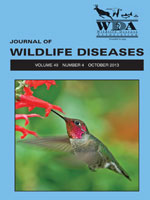Although antemortem approaches in wildlife disease surveillance are common for most zoonoses, they have been used infrequently in anthrax surveillance. Classically, anthrax is considered a disease with extremely high mortality. This is because anthrax outbreaks are often detected ex post facto through wildlife or livestock fatalities or spillover transmission to humans. As a result, the natural prevalence of anthrax infection in animal populations is largely unknown. However, in the past 20 yr, antemortem serologic surveillance in wildlife has indicated that not all species exposed succumb to infection, and anthrax exposure may be more widespread than originally appreciated. These studies brought about a multitude of new questions, many of which can be addressed by increased antemortem serologic surveillance in wildlife populations. To fully understand anthrax transmission dynamics and geographic extent, it is important to identify exposure in wildlife hosts and associated factors and, in turn, understand how these influences may drive environmental reservoir dynamics and concurrent disease risk in livestock and humans. Here we review our current understanding of the serologic response to anthrax among wildlife hosts and serologic diagnostic assays used to augment traditional postmortem anthrax surveillance strategies. We also provide recommendations for the use of serology and sentinel species surveillance approaches in anthrax research and management.
How to translate text using browser tools
1 October 2013
ANTE- AND POSTMORTEM DIAGNOSTIC TECHNIQUES FOR ANTHRAX: RETHINKING PATHOGEN EXPOSURE AND THE GEOGRAPHIC EXTENT OF THE DISEASE IN WILDLIFE
Karoun H. Bagamian,
Kathleen A. Alexander,
Ted L. Hadfield,
Jason K. Blackburn
ACCESS THE FULL ARTICLE

Journal of Wildlife Diseases
Vol. 49 • No. 4
October 2013
Vol. 49 • No. 4
October 2013
anthrax
antibody prevalence
Bacillus anthracis
exposure
sentinel species
serology
wildlife disease surveillance




